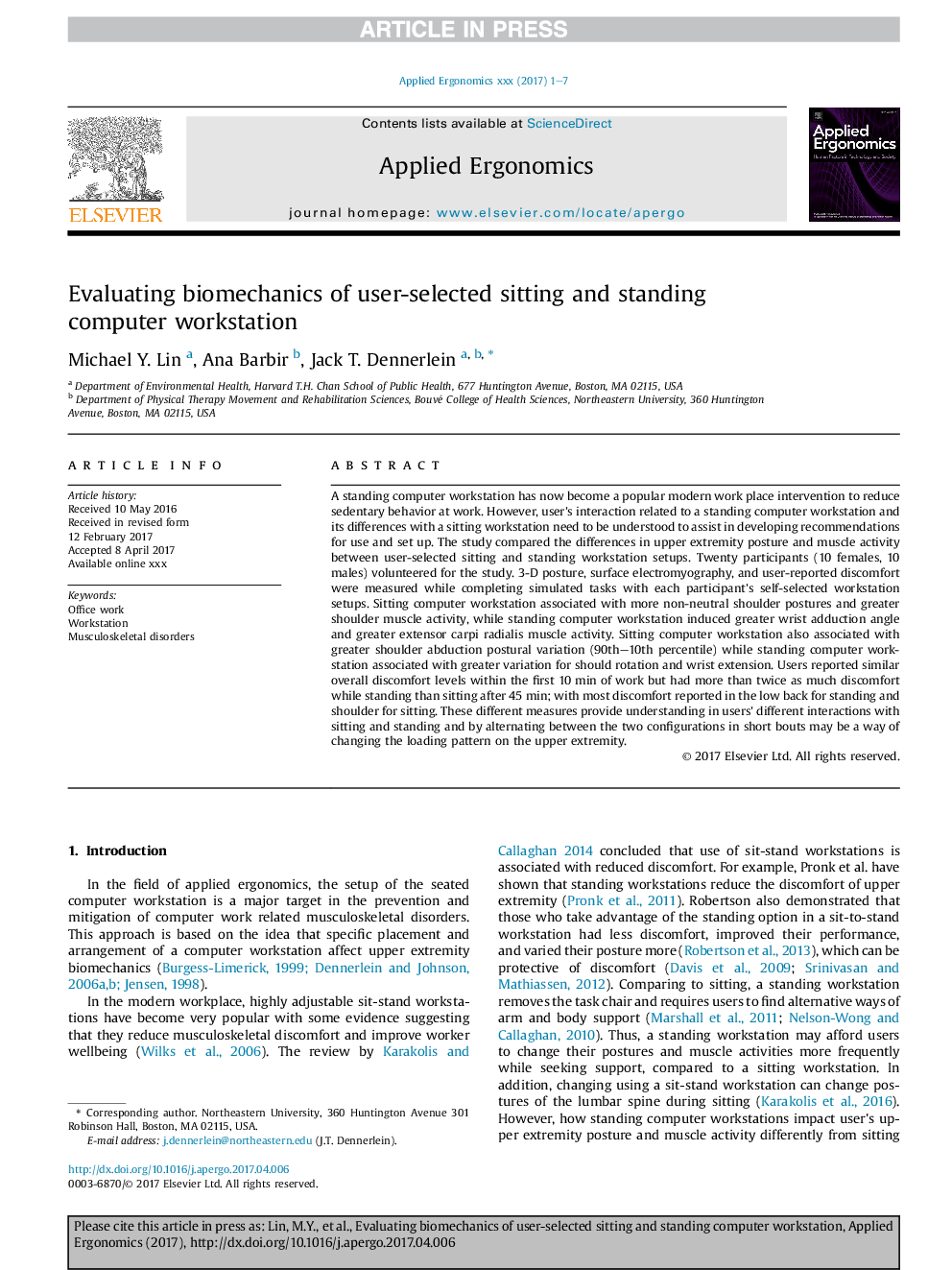| کد مقاله | کد نشریه | سال انتشار | مقاله انگلیسی | نسخه تمام متن |
|---|---|---|---|---|
| 4971966 | 1450705 | 2017 | 7 صفحه PDF | دانلود رایگان |
عنوان انگلیسی مقاله ISI
Evaluating biomechanics of user-selected sitting and standing computer workstation
ترجمه فارسی عنوان
ارزیابی بیومکانیک ایستگاه کاری کامپیوتری ایستگاه کاری ایستاده و ایستگاه کاری که کاربر انتخاب شده است
دانلود مقاله + سفارش ترجمه
دانلود مقاله ISI انگلیسی
رایگان برای ایرانیان
کلمات کلیدی
دفتر کار، ایستگاه کاری، اختلالات اسکلتی عضلانی،
موضوعات مرتبط
مهندسی و علوم پایه
مهندسی کامپیوتر
تعامل انسان و کامپیوتر
چکیده انگلیسی
A standing computer workstation has now become a popular modern work place intervention to reduce sedentary behavior at work. However, user's interaction related to a standing computer workstation and its differences with a sitting workstation need to be understood to assist in developing recommendations for use and set up. The study compared the differences in upper extremity posture and muscle activity between user-selected sitting and standing workstation setups. Twenty participants (10 females, 10 males) volunteered for the study. 3-D posture, surface electromyography, and user-reported discomfort were measured while completing simulated tasks with each participant's self-selected workstation setups. Sitting computer workstation associated with more non-neutral shoulder postures and greater shoulder muscle activity, while standing computer workstation induced greater wrist adduction angle and greater extensor carpi radialis muscle activity. Sitting computer workstation also associated with greater shoulder abduction postural variation (90th-10th percentile) while standing computer workstation associated with greater variation for should rotation and wrist extension. Users reported similar overall discomfort levels within the first 10Â min of work but had more than twice as much discomfort while standing than sitting after 45Â min; with most discomfort reported in the low back for standing and shoulder for sitting. These different measures provide understanding in users' different interactions with sitting and standing and by alternating between the two configurations in short bouts may be a way of changing the loading pattern on the upper extremity.
ناشر
Database: Elsevier - ScienceDirect (ساینس دایرکت)
Journal: Applied Ergonomics - Volume 65, November 2017, Pages 382-388
Journal: Applied Ergonomics - Volume 65, November 2017, Pages 382-388
نویسندگان
Michael Y. Lin, Ana Barbir, Jack T. Dennerlein,
